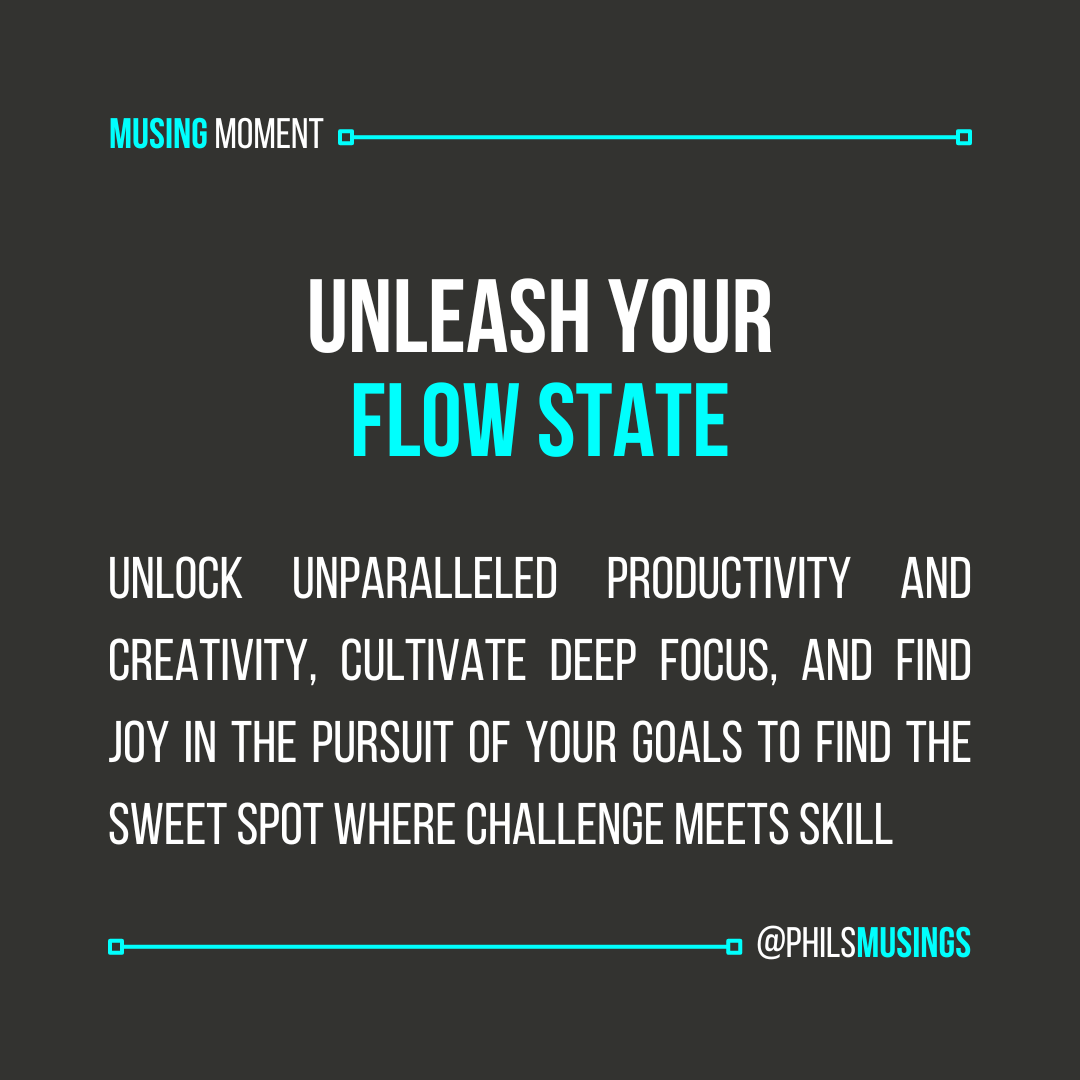Peaking in the Flow State
In the ever-evolving landscape of professional achievement, mastering the flow state emerges as a cornerstone for unlocking sustained peak productivity. This mental state, characterized by a profound sense of focus and elevated performance, holds the key to transformative outcomes in the pursuit of lifelong success. Let's delve deeper into the intricacies of this phenomenon and explore how to harness it for optimal productivity.
Key 1: Understanding the Flow State
The flow state is an intricate symphony of deep concentration and intrinsic motivation. To truly leverage its power, it's essential to understand the unique triggers that propel you into this heightened state of productivity. Whether you're engaged in creative endeavors, complex problem-solving, or analytical tasks, recognizing and harnessing these triggers becomes the foundational step toward entering the flow state consistently.
Consider this process as orchestrating a symphony of tasks tailored to your capabilities. Like a skilled conductor aligns the instruments for harmonious melodies, aligning your tasks with your skill set creates a productive symphony. It's not merely about matching difficulty levels; it's about creating a seamless, synchronized workflow that maximizes your potential.
Imagine stepping onto a conductor's podium, where each task is a musical note carefully chosen to create a masterpiece. The tempo of your work aligns with the rhythm of your capabilities, resulting in a harmonious composition of focused and intentional productivity.
Key 2: Crafting the Optimal Environment
Crafting an environment conducive to the flow state involves a meticulous blend of eliminating distractions and setting clear, attainable goals. Much like an architect meticulously designs a space for functionality and aesthetics, you too can optimize your workspace. Clear your digital and physical surroundings of unnecessary clutter, providing a canvas for undistracted focus.
Setting specific, measurable, and challenging goals acts as the blueprint for your professional endeavors. Envision this process as an architectural plan, where each goal serves as a pillar supporting your journey to the flow state. As you implement these design principles, you'll find your workspace becoming a haven for creativity, focus, and unparalleled productivity.
Imagine your workspace as a canvas, waiting for the strokes of your intentional design. Each goal becomes a pillar, contributing to the overall structure of a conducive and inspiring environment. With distractions banished and goals in place, your workspace transforms into a sanctuary where the flow state can flourish.
Key 3: Embracing Challenges and Feedback
The flow state thrives on challenges that lie within the boundaries of your capabilities. This principle aligns with the philosophy of deliberate practice. Similar to an elite athlete pushing their limits to enhance performance, professionals can strategically undertake tasks that expand their skill set.
In this context, challenges become the weightlifting regimen for your professional skills. Embracing feedback transforms into a nuanced coaching process, guiding your growth trajectory. Picture yourself as a versatile athlete, engaging in a comprehensive training routine that propels you toward excellence in your field.
Envision your professional journey as a series of challenges that spark growth. Each challenge is a stepping stone, elevating your skills and propelling you further along your path. Embracing feedback becomes a coaching session, fine-tuning your performance and setting the stage for continuous improvement.
Mastering the flow state is not a destination but a journey—a lifelong commitment to intentional, focused, and efficient professional performance. As you embark on this transformative journey, observe how each nuanced element, from understanding triggers to crafting your environment and embracing challenges, contributes to the symphony of your success.
Phil


